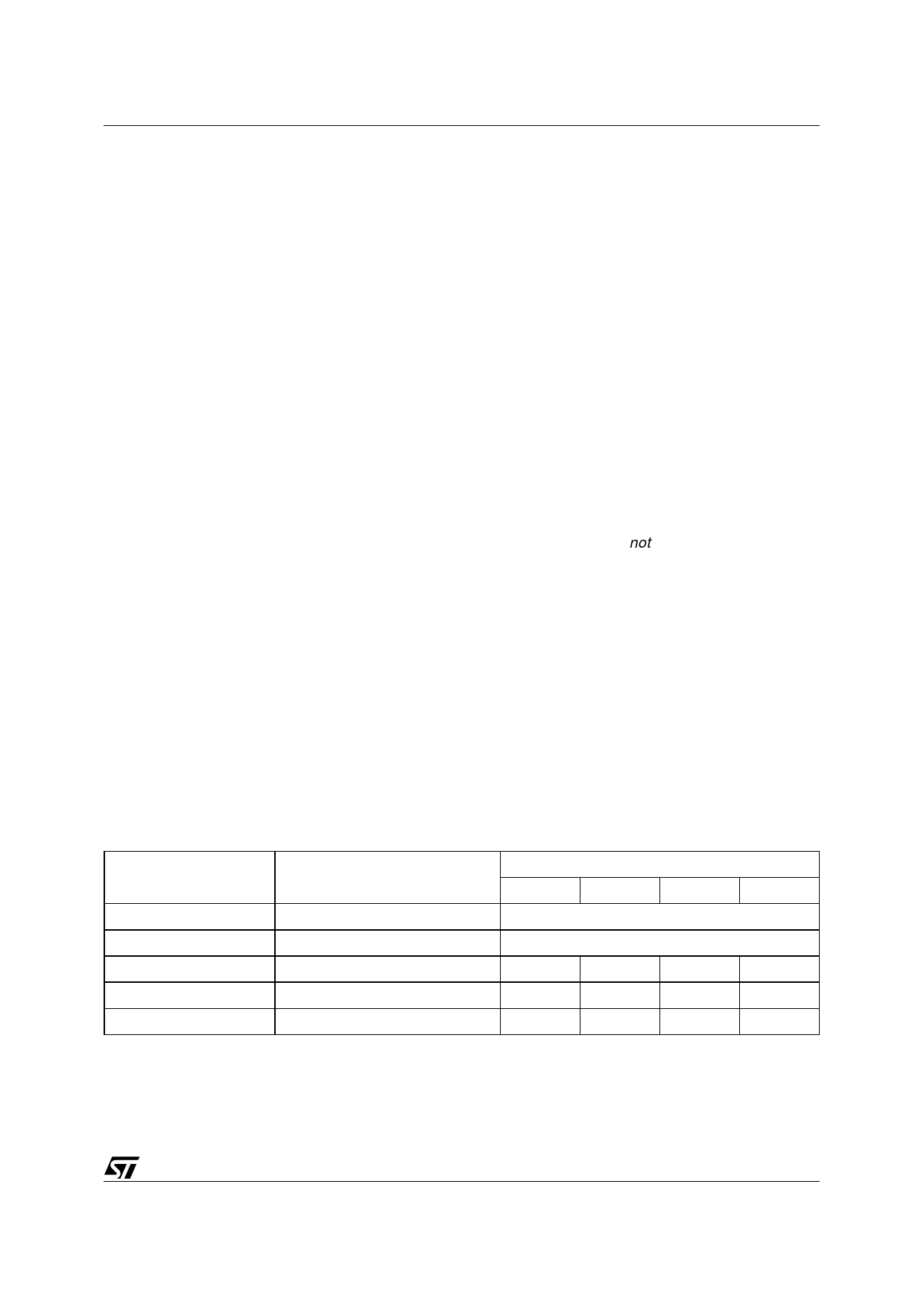UPSD3212A(2009) Просмотр технического описания (PDF) - STMicroelectronics
Номер в каталоге
Компоненты Описание
производитель
UPSD3212A
(Rev.:2009)
(Rev.:2009)
UPSD3212A Datasheet PDF : 181 Pages
| |||

UPSD3212A, UPSD3212C, UPSD3212CV
Architecture overview
Table 5. Logical instructions
Mnemonic
Operation
Addressing modes
Dir.
Ind.
Reg.
Imm.
ORL <byte>,A
A = <byte> .OR. A
X
ORL <byte>,#data
A = <byte> .OR. #data
X
XRL A,<byte>
A = A .XOR. <byte>
X
X
X
X
XRL <byte>,A
A = <byte> .XOR. A
X
XRL <byte>,#data
A = <byte> .XOR. #data
X
CRL A
CPL A
A = 00h
A = .NOT. A
Accumulator only
Accumulator only
RL A
Rotate A Left 1 bit
Accumulator only
RLC A
Rotate A Left through Carry
Accumulator only
RR A
Rotate A Right 1 bit
Accumulator only
RRC A
SWAP A
Rotate A Right through Carry
Swap Nibbles in A
Accumulator only
Accumulator only
2.11
2.11.1
Note:
Data transfers
Internal RAM
Table 6 shows the menu of instructions that are available for moving data around within the
internal memory spaces, and the addressing modes that can be used with each one. The
MOV <dest>, <src> instruction allows data to be transferred between any two internal RAM
or SFR locations without going through the Accumulator. Remember, the Upper 128 bytes of
data RAM can be accessed only by indirect addressing, and SFR space only by direct
addressing.
In UPSD321xx devices, the stack resides in on-chip RAM, and grows upwards. The PUSH
instruction first increments the Stack Pointer (SP), then copies the byte into the stack. PUSH
and POP use only direct addressing to identify the byte being saved or restored, but the
stack itself is accessed by indirect addressing using the SP register. This means the stack
can go into the Upper 128 bytes of RAM, if they are implemented, but not into SFR space.
The Data Transfer instructions include a 16-bit MOV that can be used to initialize the Data
Pointer (DPTR) for look-up tables in Program Memory.
The XCH A, <byte> instruction causes the Accumulator and ad-dressed byte to exchange
data. The XCHD A, @Ri instruction is similar, but only the low nibbles are involved in the
exchange. To see how XCH and XCHD can be used to facilitate data manipulations,
consider first the problem of shifting and 8-digit BCD number two digits to the right. Table 8
shows how this can be done using XCH instructions. To aid in understanding how the code
works, the contents of the registers that are holding the BCD number and the content of the
Accumulator are shown alongside each instruction to indicate their status after the
instruction has been executed.
25/181